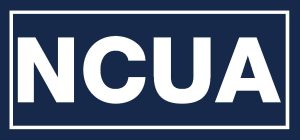Sometimes you need a bit of extra cash. Maybe you’ve run into an emergency or want to finance a major life event. Or perhaps you want to consolidate debt to avoid exorbitant interest rates. Regardless, sometimes you need to preserve your savings and cover additional costs. This is where a personal loan can come in.
However, before you take out a personal loan, you want to know how they work, what kind of interest you can expect, and how much money you can take out. It’s always a good idea to do your research before making a decision that will impact your finances.
Why You Might Want A Personal Loan
Emergency expenses
Life happens. You never know when you will end up in a situation where you need to spend a large amount of money you haven’t saved for.
This could mean emergency medical expenses, car repairs, or a sudden trip you need to take. If your refrigerator or washing machine cuts out on you, you’ll be left without access to some critical necessities. Whatever the use, personal loans allow you to make ends meet when money is tight.
Debt consolidation
One of the common uses for personal loans is the consolidation of debt. This could be debt from other smaller loans or credit card debt. You can use the personal loan to pay off the various sources of your debt, making it more straightforward to get on track with your finances.
Plus, personal loans often have lower APR than credit cards, so the process can help you get out of a cycle of endlessly increasing the amount of money you owe the credit card company.
Large purchases
Whether it’s your wedding, a honeymoon, or a big home improvement project, sometimes you just need some extra cash to accomplish something you want or need. Personal loans can be used to cover a variety of expenses.
How Much Personal Loan Can I Get?
When you apply for a personal loan, you borrow a specific amount of money — most often at a fixed interest rate — for a set amount of time. Personal loans are unsecured installment debt, meaning they’re not guaranteed by a valuable asset and are repaid with regularly scheduled payments at a fixed amount each month.
Depending on the intended use, you might be looking for a loan for a small amount of money or something a bit larger. You may just want to pay off $500 in credit card debt, or perhaps you want to finance a $25,000 wedding.
The amount you can borrow is dependent on the lender you choose. You can find personal loans that range from $100 to $100,000. The amount you get approved for is based on your creditworthiness.
Most lenders offer personal loans for moderate amounts with a cap at $10,000 or $15,000. However, some lenders supply loans for higher amounts. For example, TEG FCU offers personal loans of over $30,000.
How Do I Take Out A Personal Loan?
Getting a personal loan is similar to other money-lending processes (like taking out a car loan or a home loan). Here’s a general overview of the process.
1. Revisit your budget
Anytime you plan to add debt to your finances, it’s wise to spend some time revisiting your monthly budget to make sure you can afford to take on a personal loan.
In some cases, like when you are taking out a loan to cover emergency expenses or to consolidate debt, this might not be relevant. But if you’re taking out a personal loan to pay for a vacation, be aware of how much you can afford to spend each month.
2. Know your stats
When considering applying for a personal loan, you should have some personal data on hand. Lenders will ask for your credit score, your average income, and your current debts. This information will be important for determining what APR you qualify for and how much money you can take out based on your creditworthiness.
3. Shop for the best APR
To get a real sense of how much a personal loan will cost you, keep an eye on the annual percentage rate, or APR. Like any major financial decision, you should shop around to get the best deal. You may want to browse online lenders and large banks, but oftentimes your local credit union will offer the most attractive loan deal. Watch out for other costs like application or origination fees. TEG doesn’t charge any fees at all.
Keep accurate records of the loans you find and their details as you shop. You may also want to discuss your options with a loan officer or customer service representative to make sure you understand the rates you can get approved for.
Check out our personal loan calculator to compare different loans and determine which one will save you the most money.
4. Apply for the loan
The application process is usually pretty straightforward! Most lenders have an online process where you can apply for approval.
5. Submit your documents
You are required to submit some documentation to support your loan before it is finalized. These may include proof of income, identification, and proof of address. Each lender is unique and may ask for additional information, so be sure to read the guidelines to know what you will need.
6. Receive your loan and start paying it back
Once you have been approved and have accepted the loan, the amount of money in full will be transferred to your bank account. Then the repayment period begins, which for personal loans is often for one to five year terms.
Ensure that you understand the payment schedule for your loan terms. Some lenders tack on a prepayment penalty if you pay your loan off early. You won’t find prepayment penalties at TEG Federal Credit Union.
Deciding Between Personal Loan & Credit Cards
If you need a relatively small amount of cash, a credit card may be a more viable option. Check out our blog post about the use-cases for personal loans versus credit cards to find out more information.












